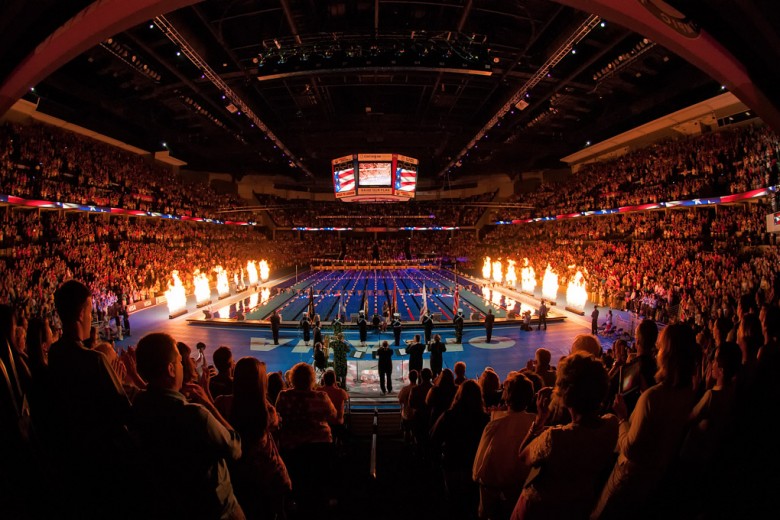The 2016 U.S. Olympic Swimming Trials will be held in Omaha, Nebraska from Sunday, June 26th, through Sunday, July 3rd, 2016, the organization announced today. That’s a week earlier than had been most widely discussed over the last few years of decision-making.
That will leave approximately four-and-a-half weeks between the selection event and the beginning of the games, though as compared to the last several Olympics, the Americans will have the benefit of being in a similar time zone for 2016 – meaning that the intermittent staging camps won’t necessarily have to be as extensive.
Despite roughly the same timing of the trials as USA Swimming had in 2012, there will be an extra week of time in between the Trials and the Olympics, with the Rio Games holding their opening ceremony on August 5th, as compared with London where the Games began in July.
“As the marquee swimming event in the United States, the Olympic Trials have been elevated to the upper echelon of sports events,” USA Swimming Executive Director Chuck Wielgus said. “Athletes, families, fans, coaches and corporate partners enjoy a tremendous experience with compelling competition in CenturyLink Center Omaha, a wonderfully interactive engagement in the Aqua Zone, welcoming hospitality and the camaraderie of the entire swimming community.”
USA Swimming also announced that qualifying standards will be announced on Thursday, September 18th, at 2PM Eastern Time form the United States Aquatic Sports Convention in Jacksonville, Florida.
One again, Myrtha will be installing two temporary 50-meter pools in the CenturyLink Center in Omaha, just as they have done for the last two editions of this meet. Among the changes being made in 2016 will be the creation of an almost “false bottom” to the pool that will allow wires for underwater cameras to be routed under the pool, rather than across the bottom.
More than 165,000 tickets were stamped for the 8-day 2012 U.S. Olympic Trials, and while that’s close to capacity, it is not the maximum that can fit into the CenturyLink center. With 17,000 seats, and 15 sessions, well over 200,000 can go through across the event.

They are listed on USA swimming Olympic trials event schedule
Dose anyone know what the event schedule is, like wich days certain swim are at?
How things change in 1972 at Chicago Portage Park a Trials there was a 32 limit in each event were you called in to get final cut like NCAA. There was three per event being picked. Standards should be at least tougher than the past two trials this is the ultimate in USSwimmin and there are other meets to take care of everyone else.
This really stinks. Once again too close to the games and placing a huge burden on the swimmers. Sigh.
USA Swimming would be foolish to make tougher standards for multiple reasons:
1. They are about inclusion and easier standards include more swimmers.
2. Trials are a different beast than any other meet and getting young kids experience pays off. Kara Lynn Joyce is a great example. Look at her place in 2000 and then in 2004.
3. They want to sell tickets and make $$. Swimming is not a mainstream sport. You might think that a lot of non-swimming families are drawn to the trials every 4 years….but you are likely wrong. The stands are filled with swim parents and families just like any age group meet. Having more swimmers attend, who have 2 to 6 family… Read more »
2008 and 2012 were both too big. I had not heard talk of having a SCY standard (and I hope there is not one established).
There should also be just one ‘A’ standard since this is the end of a cycle selection meet. There is no need for a ‘B’ standard in any event. Developmental swimmers who do lot get the cut can look at Sectionals, Juniors, and LSC Champsionships for that season.
Gotta agree with you here. At the end of the day, the Olympic Trials is to decide who makes the USA Olympic Team. USA Swimming is rife with opportunities for developing talent in this country, better some would argue, than any of the other Olympic sports in the US.
Up to and including the trials in ’56 in Detroit there were no time standards. They were instituted after the indoor nationals in 1958 jumped in numbers. In the discussions to have them many felt it would discourage many. Of course the opposite as was the result of incredible drops in times and numbers in swimming grew rapidly.
When do tickets come on sale?????